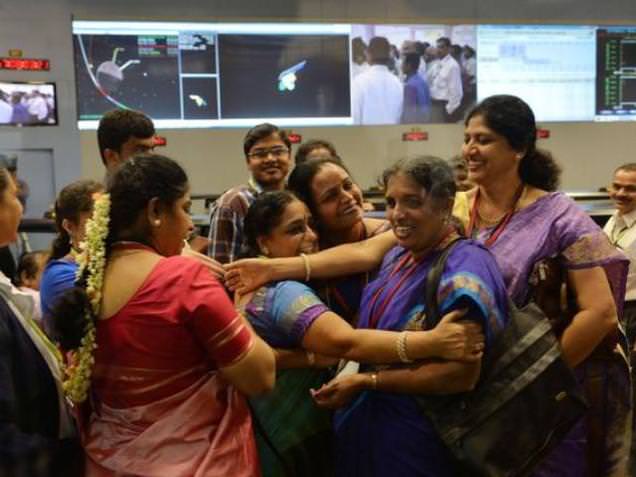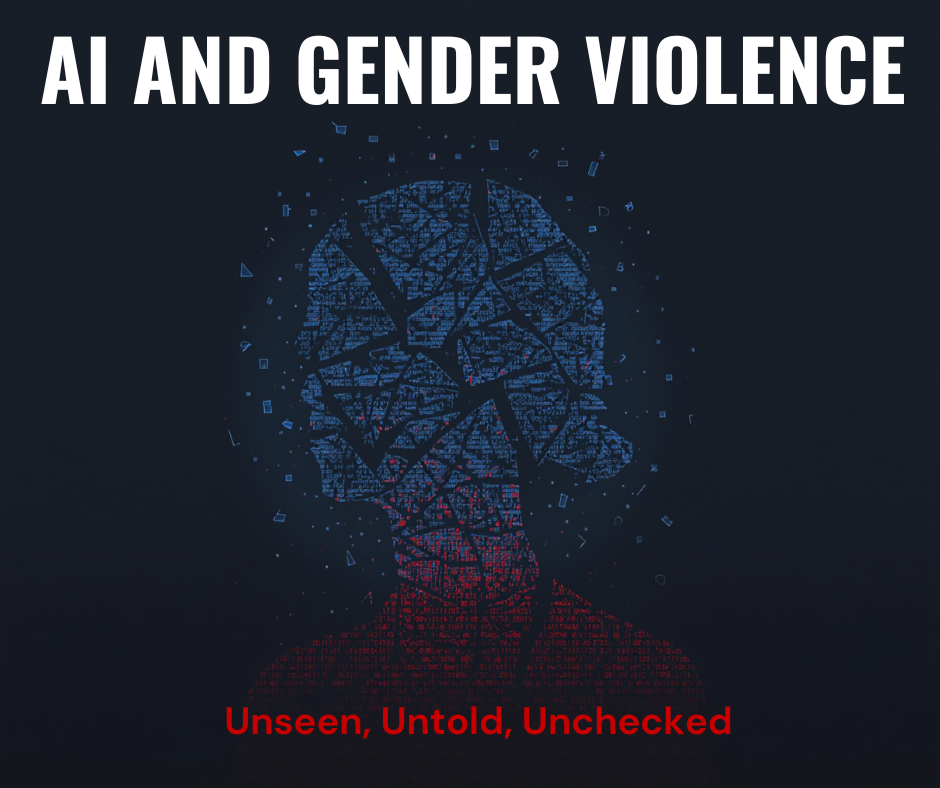We all read those articles titled ‘study finds’ or ‘scientists suggest’ in papers and on the internet. If the first thing that pops into your head while reading it, is the image of a middle-aged, eccentric, Einstein-esque man, it is obviously problematic but you cannot be blamed entirely. One of the rare occasions in which Indian women scientists were visible in mainstream media was when Mangalyaan was sent to Mars in 2014 – a picture (featured image) of the jubilant women behind the mission was on the front page of all the leading Indian newspapers.
Women’s representation in science globally is abysmal but even more so in India. According to reports by the UNESCO Institute for Statistics, women researchers comprise only 28% of the total scientists in the world and, in India, this figure is a painfully low at 14.8%.
The enrolment of women into science courses has increased significantly from 7.1% in 1950 to 40% as of 2009. Yet, female graduates and postgraduates in science somehow don’t always transition into PhD holders and researchers. Among the PhD holders, 37% are women, but less than 15% hold science faculty positions. The UNESCO describes this as the ‘pipeline effect’- losing a little at every step of the way. So, why are we losing women in the scientific career path?
Jocelyn Goldfein, a director of engineering at Facebook probably said it best, “The reason there aren’t more women computer scientists is because there aren’t more women computer scientists”. One of the reasons for fewer women in science is the lack of role models in the field and that really is a vicious cycle. But even when there are women researchers out there making scientific breakthroughs, their stories are never heard. While almost all of us recognize CV Raman and S Ramanujam, how many of us have heard of Janaki Ammal or Anandibai Joshi?
It is this discrepancy in the statistics regarding women in science and their underrepresentation in the public domain that bothered former scientists Aashima Dogra and Nandita Jayaraj. They wanted to find out where the Indian women in science were, and what they were up to. “We decided that the best way to do this would be to go on the ground and see for ourselves“, they write in an article published in the Economic and Political Weekly (EPW). Together, they started a blog named ‘The Life of Science’ that brings to light the stories of female researchers from across the country with special focus on their work, what motivated them to become scientists, what motivates them to stay and what pressures they’ve had to fight off to get there.
In a society that has an inherent bias that tells women that they aren’t bright enough, they tend to underestimate their own capabilities, and assume that they wouldn’t be able to handle challenging subjects like physics, maths or engineering. In an interview with The Life of Science, Maryam Baghini, an electrical engineer at IIT Bombay says “I have worked with electrical motors and faced no problems. Women need encouragement. It’s a matter of telling girls that engineering is the same as other areas.”
About a decade ago, former Harvard President Lawrence Summers tried to explain the gender gap by pointing out, that men and women are wired differently. Because as several examples in the Indian political system point out, when there exists sexism there exist men in power who will try to justify it instead of figuring out ways to do something about it! Vidita Vaidya, a neuroscientist at the Tata Institute for Fundamental Research (TIFR) agrees this is a lazy excuse. In another interview with The Life of Science she says, “You can’t use this meritocracy debate! Are you telling me genetically we are incapable? Clearly (we are) not. The brain is clearly capable of performing irrespective of gender. I think it’s reflective of the patriarchal society. It’s not true to think that science is not patriarchal because science is practiced by people and people are conditioned that way” (she exclusively studies the brain, so you bet she knows what she’s talking about!). Here’s a 2009 paper published by Stephen J. Ceci, Wendy M. Williams and Susan M. Barnett of Cornell University for further proof.
Kavita Shah one of the directors at the Banaras Hindu University, believes that, “There are only two kinds of women who can go very far in research: those who have support from their families and those who rebel against the oppression.” This is because, apart from the universal challenges female scientists face at the workplace, Indian women have to tackle a specific set of problems of their own.
The idea of a woman prioritising her professional life is unimaginable in conservative Indian communities because it is believed to shift focus from their primary role – that of being a mother. Women aren’t always urged to take on challenging courses like science and are encouraged to settle for easier options so that they can sustain themselves until they’re married off to a man who can actually support them.
The scientific field also requires maintaining a certain rapport with authorities and colleagues and it becomes essential to be part of the inner circle or the ‘boy’s club’. This is sometimes a constraint in a deeply patriarchal society like ours which views female-male interactions in an unhealthy and often one-dimensional way. This could sometimes affect the visibility of female scientists and reduce recognition for their achievements. This exclusivity could also result in a lack of mentoring for women. Radhika Nair a cancer biologist at Rajiv Gandhi Centre for Biotechnology, Trivandrum, believes the problem isn’t insurmountable. “In the beginning, a woman may have to be ready to work twice as hard but at a point, it becomes a level playing field. There are boys clubs, but I don’t care about that. I’ve been lucky to have had mentors who don’t look at us as women but as scientific colleagues. That’s why you aim for areas of excellence because that’s where you find people like that.”
On the other hand, Charusita Chakravarty, the 2009 recipient of the prestigious Shanti Swarup Bhatnagar Award admits that she has had to turn to stronger networks overseas because of this isolation. But is there no other way apart from holding on and trying to survive in a system designed to keep women out? Shubha Tole, a neurobiologist at TIFR is trying to change the system from within. She explains that, “(My) struggle itself is the contribution, because in not yielding and not changing who I am, I make it easier for the next woman who does not fit the expected stereotype of being pliable, non-controversial and accommodating.”
Another reason Indian women are losing out in science is because of the time-off they need to take after bearing children. As a society that still puts the pressure of primary care taking solely on women, re-entry into an ever changing, fast-paced stream like science after a long hiatus is rather difficult. In this regard, Radhika Nair admits that, “People say there is no bias against women who’ve taken a break but believe me there is. The thing is, if you take a break for maternity in science, it’s not just the one year you miss out on because by the time you can restart it takes twice as long. It’s so competitive that two years can be a lifetime.” It is no surprise then that the aforementioned Bhatnagar prize awarded to scientists below 45 years of age has had only 14 female awardees as of 2010, out of the 463 awards handed out. “Time just runs out for many women scientists who take a break for the family,” admits Mitali Mukherjee, a scientist at the Institute of Genomics and Integrative Biology (IGIB), New Delhi, who won the award in 2010. In their report for the EPW, Aashima and Nandita note that most mothers among the scientists they interviewed stress on support from family, in being able to raise a child because of the long and erratic work hours that a career in science calls for.
The absence of female researchers certainly reflects in the kind of research that has been done so far. Since there is only the perspective of men involved in the narrative, there are some disastrous consequences that follow. Since the dawn of science, the standard reference used has been an average sized male, be it testing the effects of certain drugs or studying the symptoms of a disease. For the longest time, the sexes of the animals used for lab testing and of the people who attend clinical trials had also been overwhelmingly male. As a result, some of the scientific studies cannot even be applied to women because they haven’t been interpreted specifically for them! This has had consequences like not recognizing the symptoms of cardiovascular disease in women until much later and not investing enough in research to analyse and treat menstrual pain because it hasn’t been considered relevant enough.
Imagine the body of knowledge that we’re missing out on by excluding women from this field. The skills and ideas that we haven’t even begun to tap into yet!
Also read: Beyond #WomenInTech: 7 Ways You Can Make Every Single Woman Count
Featured Image Credit: Staff from the Indian Space Research Organization celebrate at the ISRO Telemetry, Tracking and Command Network in Bangalore after their Mars Orbiter spacecraft successfully entered Mars orbit on September 24, 2014. | Manjunath Kiran/AFP/Getty Images
About the author(s)
Sheryl is a science graduate who now wants to become a lawyer. Her interests include feminism in pop culture, cats and Netflix.




